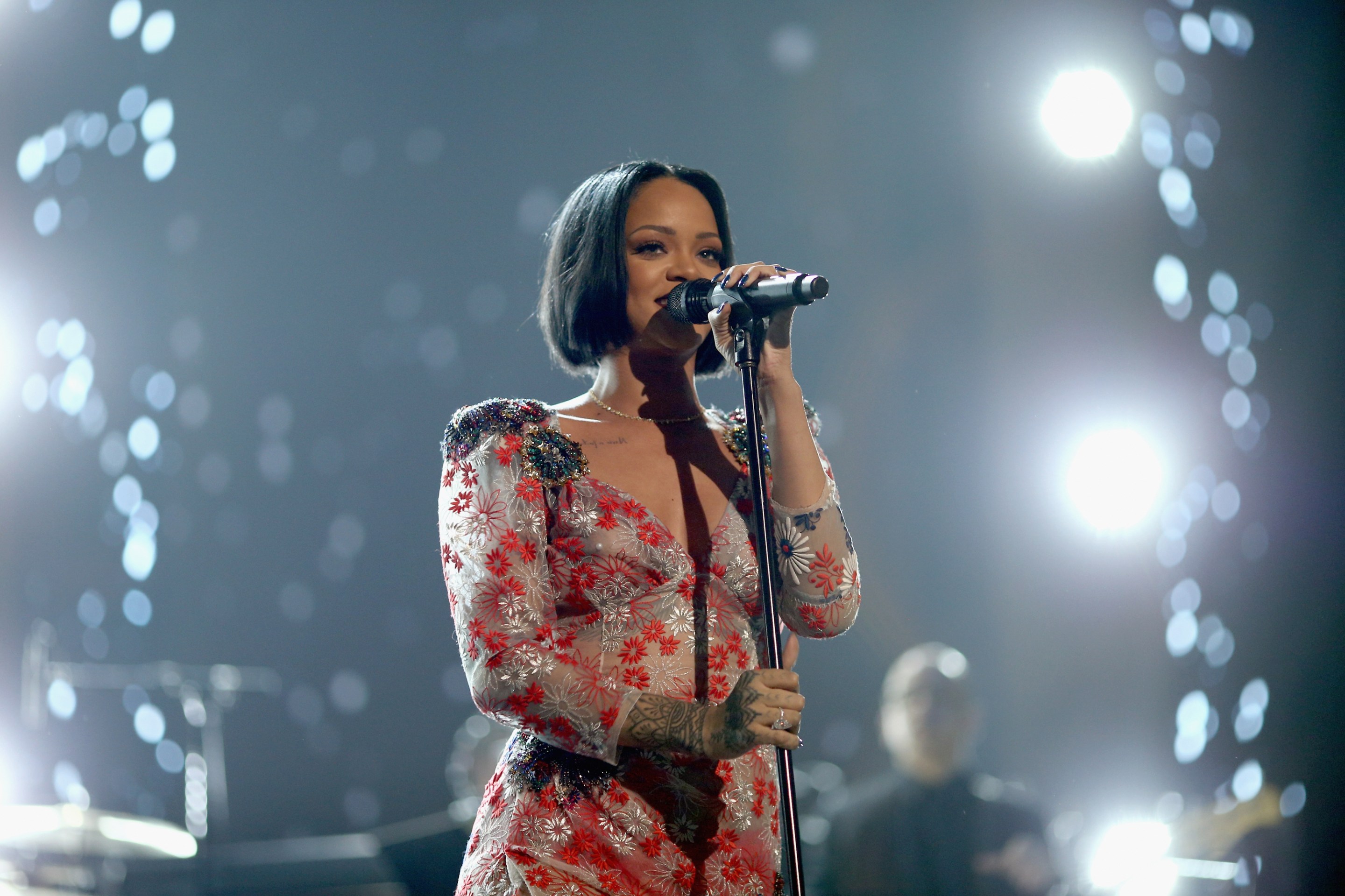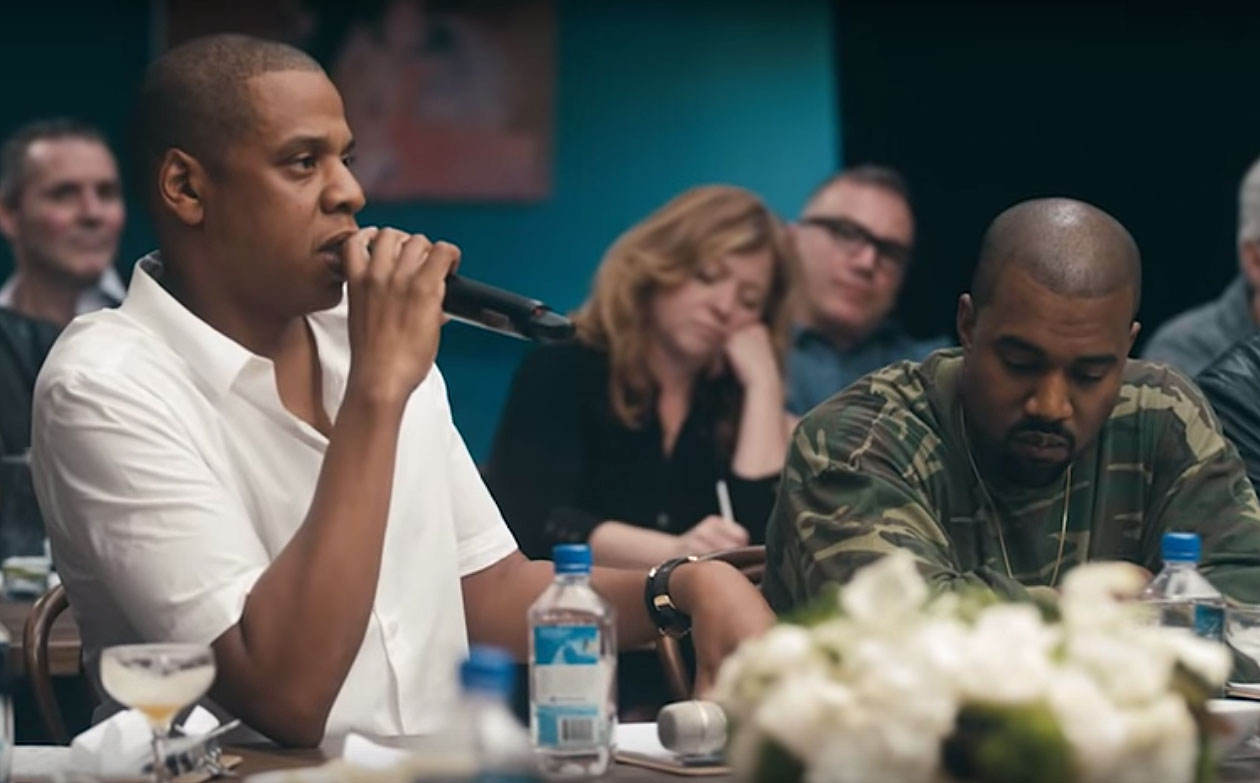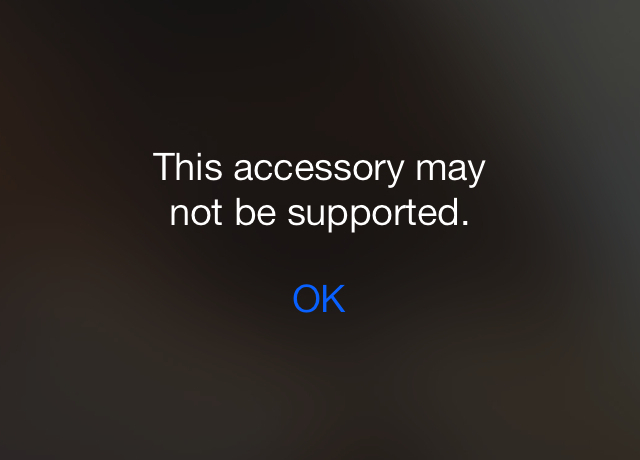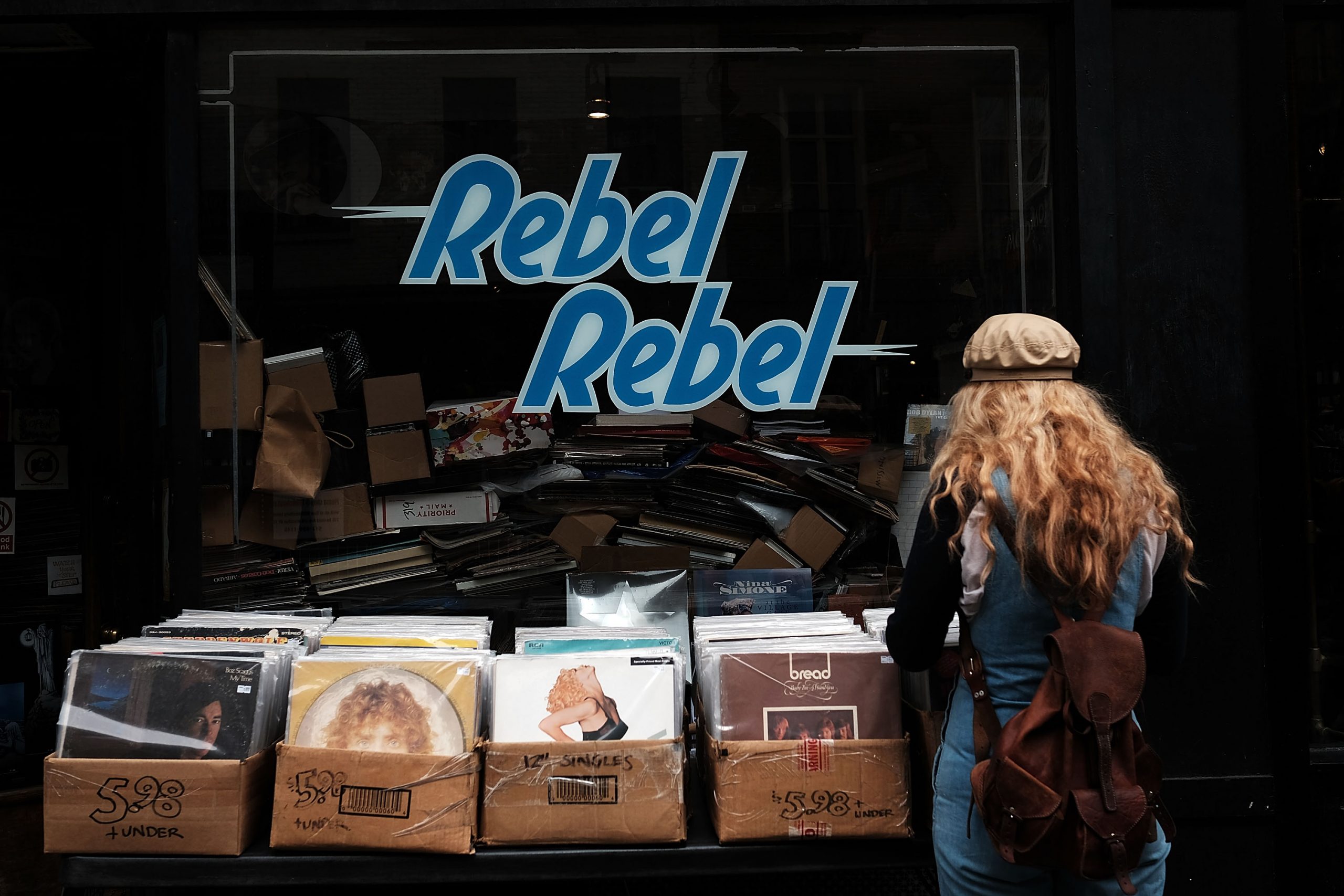Is there even such a thing as good news anymore? Man, if there is, please share, because I'm not hearing it. The whole world is a hot mess (literally!) and even those sources to whom we'd usually turn for either release or relief seem to be suffering.
So here we are! Last week, Nielsen published its 2016 U.S. Music Mid-Year Report, which adds up the country's music-consumption numbers spanning the first half of the year -- or H1, as we (apparently?) call it in the trade -- and compares the totals to those accumulated over the same time period last year. This is the first major report issued by Nielsen since their overall 2015 synopsis, which we talked about back in January, in a piece titled "Everyone Is Doomed (Except Adele): The Cold, Hard Truth About The Nielsen Music Report." And here we find ourselves, six months later, with yet another stack of data. Has it really been six months already? Oh, and also: Are we still doomed?
I mean ... look, I dunno, man. Why are you asking me? Let's put that question to the pundits. The mid-year report has been aggregated and re-written by dozens of outlets, so there's no reason for me to try to put the story into my own words. Instead, as I did with the year-ender, I've stitched together a composite version, pulling lines from 14 different articles via 14 different news organizations, cited Wikipedia-style. I think it's just about seamless! It's also maybe a little bit ... dense? I know. So don't worry about memorizing this bit; there won't be a quiz on it later. I'm just setting the stage. Here goes!
"People are listening to more music, but fewer are actually buying it, according to a mid-year music report from data company Nielsen." [1]
"The number of albums sold so far this year has reached its lowest mark since the creation of Nielsen SoundScan, according to Billboard. [2] "Overall, U.S. album sales dropped to 100.3 million -- a 13.6-percent drop compared with the same 2015 time period." [3] "[T]he CD continues to decline, moving just 40 million units in the first six months of 2016 (a decline of 11.6 percent compared to the same time period last year). Meanwhile, the vinyl collector's market is still growing, up 11.4 percent by the same metric, but remains far smaller in terms of actual records: 6.2 million copies sold in the first half of the year." [4]
"New album sales saw the biggest dip of all sectors: a 20.2 percent decrease overall to 44.1 million units" [5] "while catalog albums represented 56.2 million sales." [6] "While sales across all digital formats continue to decline, digital album sales are actually decreasing at a faster rate with each calendar half-year." [7]
"So, what's the good news? The good news is that listening to music, specifically streaming, has never been more popular." [8]
"Led by a 97.4-percent growth in audio streaming, total (audio and video) on-demand streams rose 58.7 percent to 208.9 billion." [9] "Of that 208.9 billion, 113.6 billion were audio-only, versus 95.3 billion video streams." [10] "Compare that to the first half of 2015, when audio-streaming platforms hosted 54.96 billion plays (42 percent of the market), while video platforms enjoyed 77.3 billion (58 percent)." [11] "When all sales and streaming activity are combined, Nielsen reports an increase of 8.9% in overall 'album consumption,' which credits sales of 10 individual tracks from any album as a single track-equivalent album, or TEA, sale, while 1,500 streams from tracks on an individual album is chalked up as a single streaming-equivalent-album (or SEA) sale." [12]
"The fact of the matter is that in this Music 4.0 world we now live in, is there even a reason for an artist to automatically make an album without considering some other alternatives first?" [13] "As the entire industry shifts under their feet, artists will have to figure out how to best capitalize. But for now, we find ourselves in the odd place where sales are bottoming out, but music itself is as popular as ever." [14]
Got all that? If not, here's the upshot: Sales are down! Streaming is up! Albums are over! And that awkward, confusing thing where streaming equates to albums and is counted as sales? It remains awkward and confusing!
But it shouldn't be, right? So let's use our time together today to make sense of it.
We should start by talking about the whole "1,500 on-demand song streams = 1 album sale" concept, because I feel like that one got dropped on our doorsteps without warning or explanation, and we all just brought it inside, left it in the corner of the living room, and immediately treated it like another piece of furniture that had been sitting there forever.
Maybe you have more insight than I do -- and if you do, I implore you to share it -- but the first time I heard about this equation was in November 2014, when Billboard announced a "substantial methodology update" to its Billboard 200 chart. That update?
[T]he chart, which currently tracks the top 200 albums of the week by sales alone, will be the first to include on-demand streaming and digital track sales (as measured by Nielsen Entertainment) by way of a new algorithm.
And that algorithm?
The updated Billboard 200 will utilize accepted industry benchmarks for digital and streaming data, equating 10 digital track sales from an album to one equivalent album sale, and 1,500 song streams from an album to one equivalent album sale.
"Accepted industry benchmarks"? I can find absolutely no published mention of the latter "benchmark" prior to that Billboard story. (For what it's worth, when reporting on the Billboard announcement, The New York Times did refer to the "10 track sales = 1 album sale" equation as "a common industry yardstick.")
In any case, as far as I can tell, there was never any further clarification offered by anyone at Nielsen, Billboard, or within the industry. They just said, "1,500 on-demand song streams = 1 album sale," called it an "accepted industry benchmark," and that was that.
Then, in February 2016, the RIAA announced "a new Album Award methodology for its Gold & Platinum Program," stating that "the program's iconic benchmarks -- 500,000 (Gold), 1,000,000 (Platinum) and 2,000,000 plus (multi-Platinum) -- will count both sales and streams for single and album certifications."
And how, pray tell, would that work?
After a comprehensive analysis of a variety of factors -- including streaming and download consumption patterns and historical impact on the program -- and also consultation with a myriad of industry colleagues, the RIAA set the new Album Award formula of 1,500 on-demand audio and/or video song streams = 10 track sales = 1 album sale.
So there ya go. The two major organizations compiling music-sales data -- the RIAA and Nielsen/Billboard -- would both include stream-equivalent album sales figures in their totals, treating those "equivalent" sales as, y'know, sales. Both would employ the "1,500 on-demand song streams = 1 album sale" formula. Nielsen started incorporating those numbers in an effort to "make the chart a better representation of music consumption activity." The RIAA adopted them so that it could "fully reward the success of artists' albums today."
That still does nothing to illuminate how everyone arrived at the conclusion that "1,500 on-demand song streams = 1 album sale," but let's leave that aside for a second to deal with this whole other bit of crazy-making bullshit. See, there's one fundamental difference between the two services' respective methodologies: When tallying streams, the RIAA includes all "on-demand audio and/or video song streams." Nielsen, on the other hand, tracks "all of the major on-demand audio subscription services," i.e., not video song streams, i.e., not YouTube, i.e., wtf?
To be clear, the RIAA is an absolute fucking shitshow, but here, their methodology seems to at least attempt to reflect actual listener behavior. In the first half of 2016 alone, US residents streamed 95 billion songs via on-demand video services like YouTube and Vevo (up 28 percent over the first six months of 2015).
Consider this: According to the Nielsen report, "overall album consumption" in the first half of 2016 added up to 279.9 million albums sold. However, if they were to include on-demand video streams in their tally, that figure would balloon to 345.4 million albums sold. Rihanna's "Work" video was streamed nearly 262 million times in the first six months of 2016; factor those plays into ANTI's streaming-equivalent album sales and it jumps from 1,272,000 total units to 1,446,000.
It's utterly inexplicable that Nielsen ignores these numbers when tallying stream-equivalent album sales. And it's not even consistent with Nielsen's own data analysis, because a year prior to the Billboard 200 makeover, the magazine made over its Hot 100 singles chart, and with that one, they added both subscription streaming services and YouTube plays to their total count.
The only explanation that makes sense -- and it's a bad one! -- is that Nielsen has refused to integrate on-demand video streams into its stream-equivalent album sales totals because it's reluctant to see something like, say, the "Gangnam Style" video racking up a billion views in a month and a half, resulting in Psy 6 (Six Rules), Part 1 upending the vaunted Billboard 200.
Now look, Psy 6 only moved 107,000 units in South Korea, so I'll be the first to admit: It would be weird as fuck to see that thing setting up shop as the No. 1 album in America for a four- or five-week run. It would! But it's infinitely weirder to see Nielsen -- "the music industry's leading data information provider" -- casually dismissing 95 billion song streams without any justification whatsoever. It's arbitrary and misleading. And it has the appearance of being ... kinda racist? I'm not just saying that to get your attention. You can see here, using Nielsen's mid-year data (highlighted by some notes from yours truly), how that methodology prioritizes "Rock" music while minimizing "R&B/Hip-Hop" and "Latin" music:

I'M NOT SAYING NIELSEN IS RACIST. I'm saying their methodology fails in its stated goal of being "a better representation of music consumption activity" because it treats YouTube listeners as being invisible and thus could present the perception of racism (and/or classism and/or ageism). In fairness, I guess it's a "better" representation than it would be without including any sort of streaming numbers, but it's far from optimal or even remotely comprehensive. AND it just so happens the opinions being disregarded include a lot of "R&B/Hip-Hop" listeners and the vast majority of "Latin" listeners. In Nielsen's eyes, if you don't buy records the old way or consume your music via one of "the major on-demand audio subscription services," you don't count.
Does that look like "a better representation" to you? Because to me, it doesn't look all that great.
But I'm not here to point out any problematic cultural bias inherent in some market analysis. I'm here to tell you that this whole thing is wildly distorted because it altogether disregards one of the biggest avenues for music consumption while massively overstating the impact of "traditional sales." And that distortion is amplified exponentially by the "1,500 on-demand song streams = 1 album sale" formula, which is preposterously high. It far exceeds any rational expectation for engagement. It actively serves to disenchant the consumer, treating the concept of "ownership" as an unattainable extreme, creating a vast gap between music and listener. At an average of three minutes per song, you'd have to listen to an album for 75 hours before you qualified as owning that album. So everything after 75 hours? Then you can stash that album on your shelf, call it your own. But before you hit the 75-hour mark? Not so fast, champ.
Look at it this way: As we all know, the best album of all time is the Smiths' The Queen Is Dead. There are 10 songs on that album. Can you imagine some corporate reptile getting between you and The Queen Is Dead, claiming you just hadn't earned it yet if you hadn't listened to the thing in full, all 10 songs, 150 times? TEN songs. ONE HUNDRED FIFTY times. (Or one song 1,500 times. Y'know, either way.)
Even Morrissey himself would not make such a demand of you. EVEN MORRISSEY HIMSELF! (He might feel that way in his heart, of course but he would never be so gauche as to request such a generous investment from you: his faithful subject and true companion.) Think about how Morrissey must feel about all of this. It must make him recoil in horror, sick with grief.
Or don't think about Morrissey. Think about you. Think about all the records you've ever loved, or just liked a lot. How many have you listened to, front to back, 150 times?
The craziest part is, there's no indication or evidence suggesting that "accepted industry benchmark" was ever even an attempt to capture listener engagement. Again, there's never been any official clarification on this point, but there has been some speculation, and nearly all of it arrives at the same conclusion: 1,500 song streams (theoretically) generate about as much revenue as one album sale. As the 405's Russell Thomas put it:
Once again it seems as if it's all about dat P, which means money in some circles. So I did some mathematics.
$0.007 (Spotify per-stream fee) X 1,500 = $10.50.
That is about the price of an album, wouldn't you say?
One slight clarification: As far as I know, Nielsen considers one song stream to be worth $0.0063, not $0.007, which means 1,500 streams generate $9.45, not $10.50 (and FWIW even that is a gross oversimplification, because actual payouts vary depending on a number of complicating factors), but the logic is sound and consistent with everything else I've encountered. And Thomas goes on to make an even more salient point:
[S]urely those 1,500 streams have a lot more value in them than one singular individual purchasing one singular album (but as you can see it's about MONEY). Assuming optimistically that those 1,500 are from 1,500 different people -- that's the size of a decent-sized gig! That's exposing your music to 1,499 more people than the one person that's bought an album.
I think he's right about that, and I think all this is made even more egregious when you consider that the idea of an album sale generating even $9.45 in revenue for the rights holder seems awfully specious. (As we discussed last week, indie labels reportedly clear about $2 on the sale of a vinyl LP.)
Really, there's something dispiriting about all of it, something insulting to everyone. It insults the fan, suggesting that, in the eyes of the music industry, 75 hours of our time are worth a meager $9.45. It insults the artist, suggesting that their art is empirically almost without any value, and that they don't have fans so much as casually disinterested occasional onlookers who might, at best, contribute a few pennies to their coffers. I'm not saying that changing the messaging will change the math (although it can't hurt), but continuing with this messaging will drive away everyone. We have so many things to occupy our time; why would anybody bother dedicating any energy to such a hopeless, pathetic, desperate, dying thing as this one?
But it doesn't have to be this way. And it won't stay this way, either. At some point, those metrics are going to be adjusted. Because if they're not, the entire music business will vanish from sight, entirely of its own volition. The RIAA won't be able to hand out plaques; the Billboard charts will be a constant reminder of the industry's impotence, its former relevance. They'll be saying, "Remember when Vanilla Ice sold 15 million and he didn't even have a second single? Now Rihanna's doing a billion-plus streams and it's not enough to score her a platinum record."
Of course, that little scenario ignores the bizarre machinations through which Rihanna was gifted a platinum album by Samsung without the assistance of any song streams (or actual album sales!), but I digress. The point is: THEY ARE CHOOSING THIS. Why would the industry continue to voluntarily promote the perception that nobody is listening to music when in fact everybody is listening to music?
ANTI should qualify as a multi-platinum album on its streaming numbers alone because in the New World, a billion-plus streams are worthy of numerous platinum plaques. Because that's an accomplishment worthy of celebration. Because these things need to be adjusted for their respective eras. Because the old era -- the "sales" era -- is over, and it's never coming back. There is no "streaming equivalent." There is just streaming. And the idea that "1,500 on-demand song streams = 1 album sale"? That's garbage and they know it. They know 1,500 streams are worth way more than one useless Vanilla Ice CD. They also know damn well that 15 million copies of To The Extreme are not worth even a tiny fraction of the "equivalent" 22.5 billion songs streamed, whether on Spotify or YouTube or anywhere else.
They know all that.
But they also know they can adjust that whenever they want, call it something else if they want, call it whatever they have to in order to make it sound like A Good Thing instead of A Dead Thing. And they will, and soon. Because they have to.
And when they do, all these reports and stories will read a whole lot brighter. The narrative will shift. Cheer up, guys. False alarm. Just a misplaced decimal point. Everything is cool now. Sorry for the confusion. Keep on listening. Good news. Nobody is doomed.






